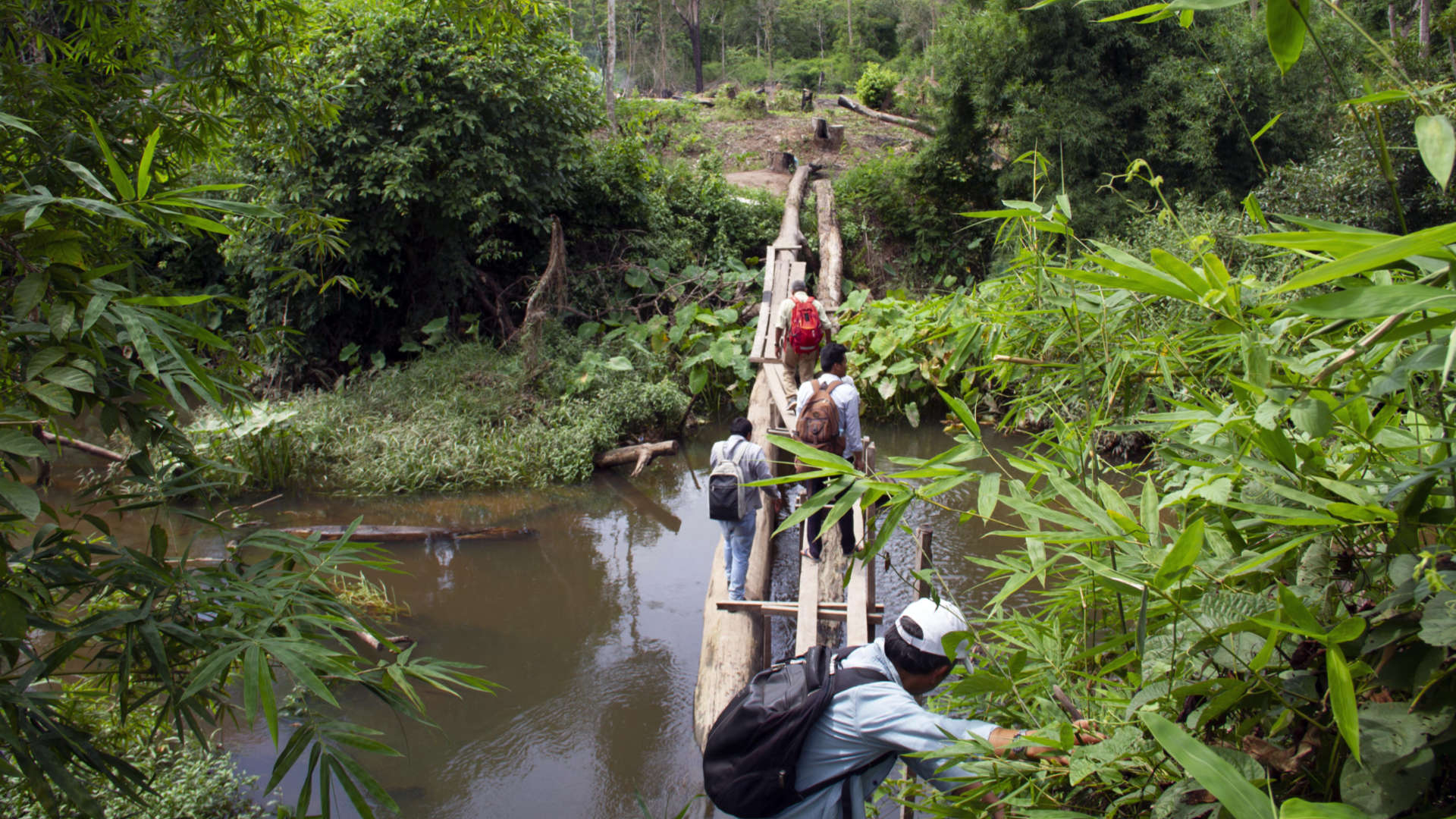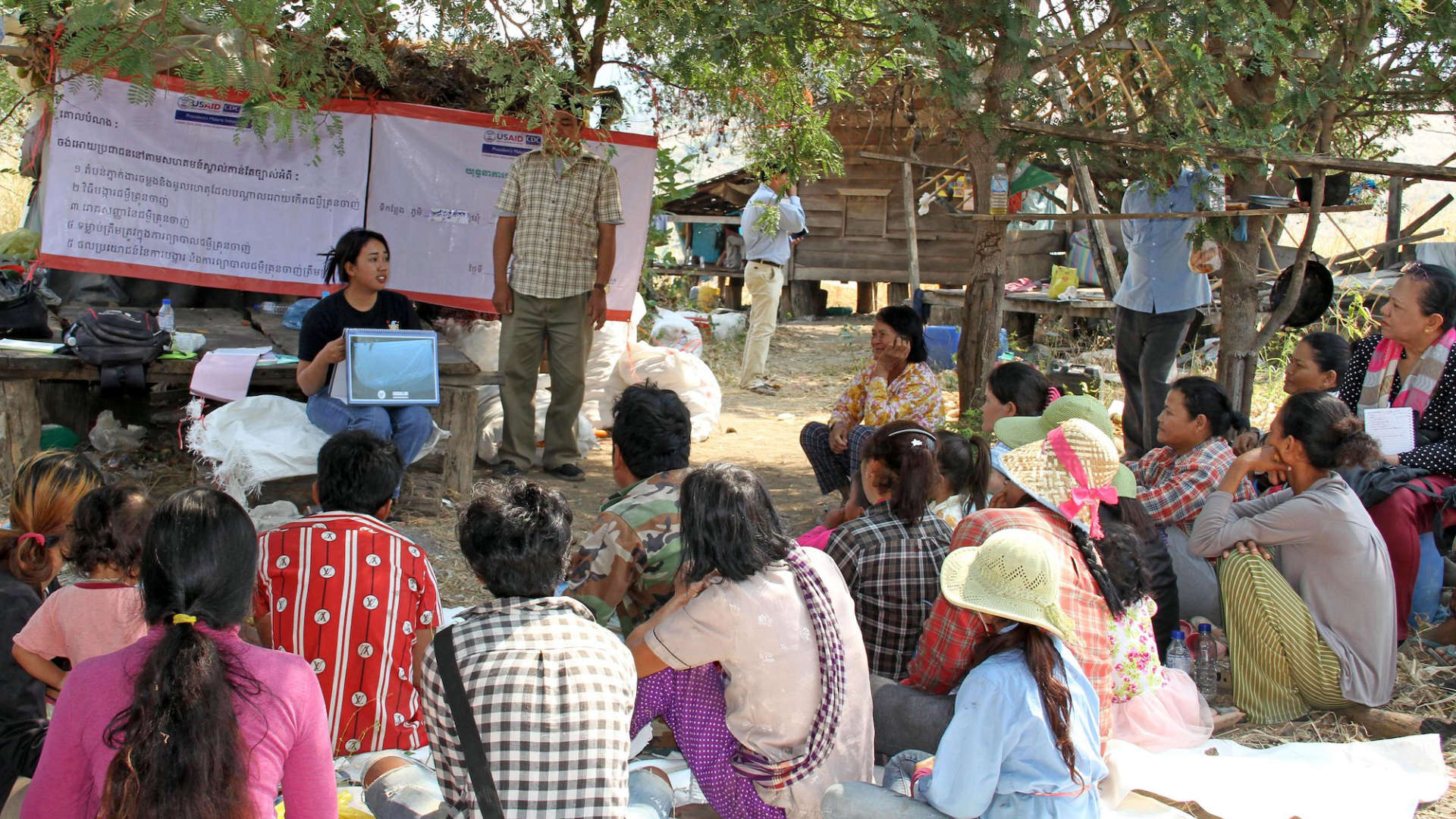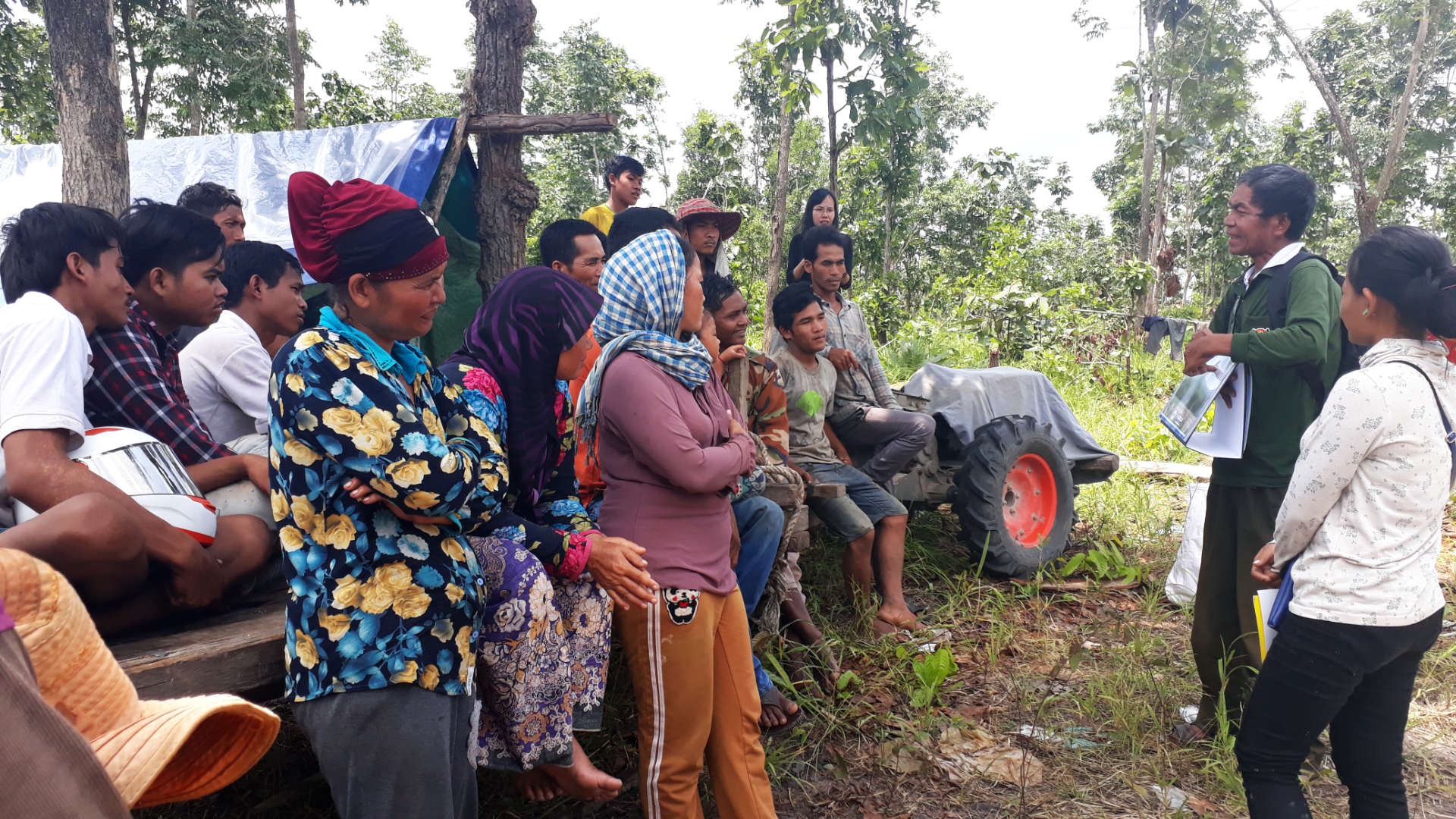In 2018, after years of steadily declining malaria-related deaths, Cambodia reported zero such deaths for the first time. The country is on track to eliminate malaria entirely by 2025.
These results are not a coincidence, but the result of years of efforts by malaria programs funded by USAID, the President’s Malaria Initiative, and other organizations. URC – as a long-time program implementer in Cambodia – played a substantial role in this success against malaria.
New Treatments, Increased Ownership Pay Dividends
Between 2000 and 2019, the number of malaria cases in Cambodia decreased by 80% – a decline from 129,167 to 25,502.
How was this achieved? Significant credit is due to a mix of interventions:
- Introduction of Artemisinin-based combination therapies (ACT) in 2000;
- Increased community and government ownership of long-lasting insecticide-treated nets; and
- Improved case management – specifically, diagnosis and treatment – through the network of village malaria workers established in 2004.
URC began working with the Royal Government of Cambodia (RGC) in 2002 with the Health Systems Strengthening in Cambodia Project. This effort enabled the RGC to improve the quality of primary care and hospital services, increase demand for health services, reduce financial barriers to accessing health services, and build provincial and operational district capacity to manage services and social protection programs.
Since 2007, URC has supported the RGC and the National Centre for Parasitology, Entomology and Malaria Control (CNM) to move toward malaria elimination through three consecutive USAID projects:
- Malaria Control in Cambodia (2007-2012), which developed, adapted, and expanded the use of evidence-based interventions for malaria prevention, diagnosis, and treatment and strengthened malaria program management capacity;
- Control and Prevention of Malaria Project (2012-2016), which consolidated proven interventions, further reducing malaria incidence, and began working with the CNM to envision what malaria elimination would look like; and
- Cambodia Malaria Elimination Project (2016-2021), which further refined the model elimination package and has implemented best practices to address malaria in forests. Now the project is working with the CNM – the national program – to scale up the model to a growing number of provinces.
Through implementing these three projects, URC worked in close partnership with Cambodian health officials – including the national program – to reinforce increased malaria program capacity and performance, which led to greater ownership by the government and communities. The collaborative efforts increased the motivation of local partners to apply effective interventions and strengthen the malaria control program and the health system at both national and local levels.
Under all three projects, URC has focused primarily on high-incidence provinces in western Cambodia, narrowing its focus to specific operational districts (ODs), villages, and hamlets as the number of cases decrease.
Today, most confirmed malaria cases are reported among males from 15 to 49 years old who live and/or work in forested areas or on private farms near the forest. Significant movement of these transient workers and their families contributes to malaria transmission. A key CMEP activity is training village malaria workers and mobile malaria workers to conduct outreach activities – including education and distribution of long-lasting insecticide-treated nets – to migrant workers in the country’s remote forest areas.

Approaching Malaria Elimination
In early 2019, the Cambodia Malaria Elimination Project began implementation of the elimination model package in seven ODs, reducing the incidence of Plasmodium falciparum malaria cases – the deadliest strain – to less than one per 1,000 people in five out of seven elimination ODs. The package was developed by URC and the President’s Malaria Initiative.
Based on this success, CNM has decided to proceed with malaria elimination efforts for the entire country using the elimination package, focusing initially on the eradication of Plasmodium falciparum and Plasmodium vivax malaria. URC’s support to the development, testing, and modification of the model during the past five years has enabled the CNM to establish systems to rapidly detect, diagnose, and treat malaria cases in a sustainable manner.
After reporting 3,528 P. falciparum and mixed malaria cases in September 2017, only 72 such cases were reported in approximately 60 villages in September 2020. And this is despite disruptions from the COVID-19 pandemic.
“CMEP’s remarkable support to the province and to the ODs have made the province look good in the malaria map,” said Dr. Khoy Dy, Pursat Provincial Health Director. “All malaria activities have been implemented without any interruptions and we appreciate CMEP team working closely with all field-level health staff to continue with malaria activities during the COVID-19 situation.”
Thanks to USAID and the President’s Malaria Initiative, the successes achieved provide strong momentum as the RGC implements its second Malaria Elimination Action Framework for 2021–2025. This framework leverages the structures, systems, and leadership skills strengthened in the past decade to eliminate malaria from Cambodia and support Cambodia on its journey to self-reliance.



